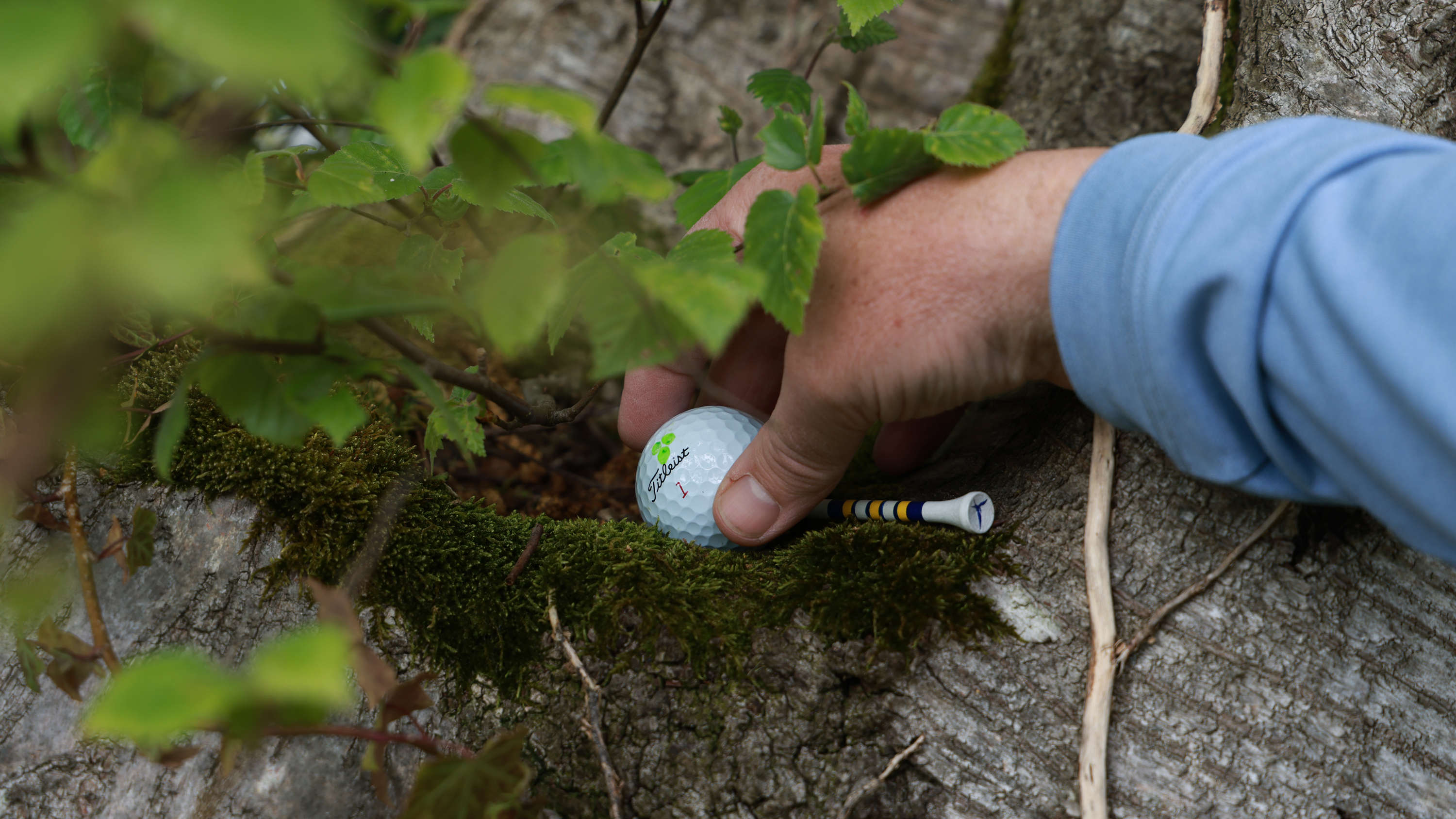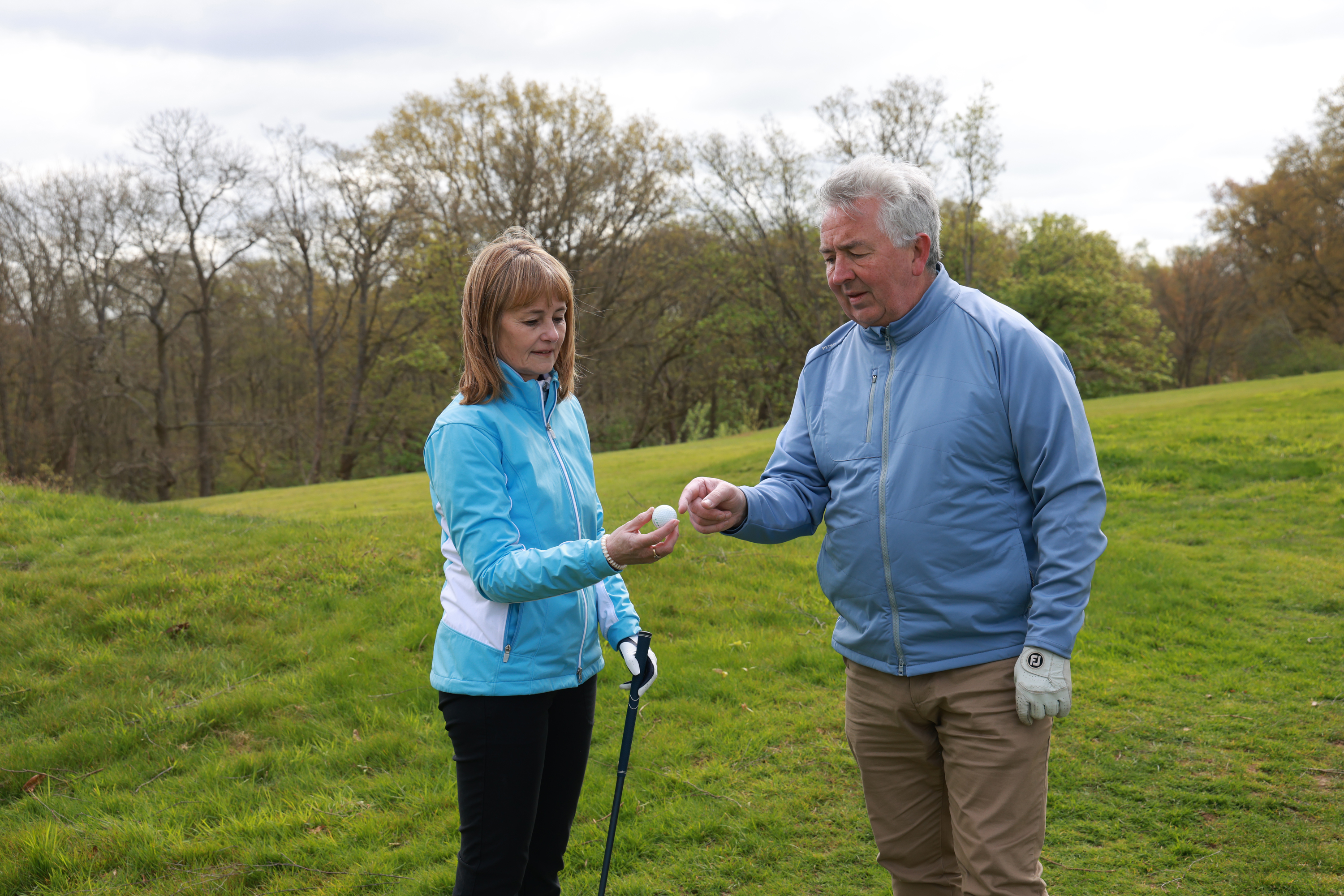What Should I Do If I Can't Identify My Golf Ball?
All the info on how to mark your golf ball and how to identify it on various parts of the course


You are responsible for playing the correct golf ball at all times, so it’s wise to put some kind of mark on it, perhaps with a Sharpie pen, to make it easier to confirm that it is yours. There is no obligation to do this under the Rules but if you're trying to figure out relief options for a ball which is visible but not retrievable a little distance away – perhaps stuck up a tree or deep in thick undergrowth – it can certainly help.
If you haven’t put an identification mark on your ball you should still be okay as, if you find one which is the same brand, model, number and condition as yours in an area where you expect it to be, that is usually good enough, unless a similar or identical ball is in the same area and there’s no way of knowing which is which.
If your ball is badly buried or hardly visible such that you can’t be sure it’s yours without further checks, you are allowed to lift it to take a closer look under Rule 7.3. But don't just wade in and pick it up as you must follow the procedure below to avoid incurring an unnecessary penalty.
First, you may only lift your ball if you are unable to identify it without doing so. If your identification mark is clearly visible on top, you may not lift it. Then, you must remember to mark the ball’s position before lifting it, using a tee peg or something similar. Finally, if there is mud or dirt on the ball, you may only clean it to the extent required to identify it, so take care here. Once identified as yours, you must then return the ball to its original position.

Is this your marking?
If you breach any of the above requirements you will get a one-stroke penalty, and furthermore, if you fail to replace the ball in the correct spot, the penalty will escalate to the general penalty, so two strokes in stroke play or loss of hole in match play for playing from a wrong place.
Finally, Rule 7.1b covers how to proceed when you need to identify a ball in sand, whether a bunker or other sand on the course. In this scenario, if you have to move sand to make a positive identification, you must then re-create the original lie in the sand before playing but are entitled to leave a small part of the ball visible if it had been completely covered originally. If you play without re-creating the lie, you get the general penalty.
Subscribe to the Golf Monthly newsletter to stay up to date with all the latest tour news, equipment news, reviews, head-to-heads and buyer’s guides from our team of experienced experts.

Jeremy Ellwood has worked in the golf industry since 1993 and for Golf Monthly since 2002 when he started out as equipment editor. He is now a freelance journalist writing mainly for Golf Monthly. He is an expert on the Rules of Golf having qualified through an R&A course to become a golf referee. He is a senior panelist for Golf Monthly's Top 100 UK & Ireland Course Rankings and has played all of the Top 100 plus 91 of the Next 100, making him well-qualified when it comes to assessing and comparing our premier golf courses. He has now played 1,000 golf courses worldwide in 35 countries, from the humblest of nine-holers in the Scottish Highlands to the very grandest of international golf resorts. He reached the 1,000 mark on his 60th birthday in October 2023 on Vale do Lobo's Ocean course. Put him on a links course anywhere and he will be blissfully content.
Jezz can be contacted via Twitter - @JezzEllwoodGolf
Jeremy is currently playing...
Driver: Ping G425 LST 10.5˚ (draw setting), Mitsubishi Tensei AV Orange 55 S shaft
3 wood: Srixon ZX, EvenFlow Riptide 6.0 S 50g shaft
Hybrid: Ping G425 17˚, Mitsubishi Tensei CK Pro Orange 80 S shaft
Irons 3- to 8-iron: Ping i525, True Temper Dynamic Gold 105 R300 shafts
Irons 9-iron and PW: Honma TWorld TW747Vx, Nippon NS Pro regular shaft
Wedges: Ping Glide 4.0 50˚ and 54˚, 12˚ bounce, True Temper Dynamic Gold 105 R300 shafts
Putter: Kramski HPP 325
Ball: Any premium ball I can find in a charity shop or similar (or out on the course!)